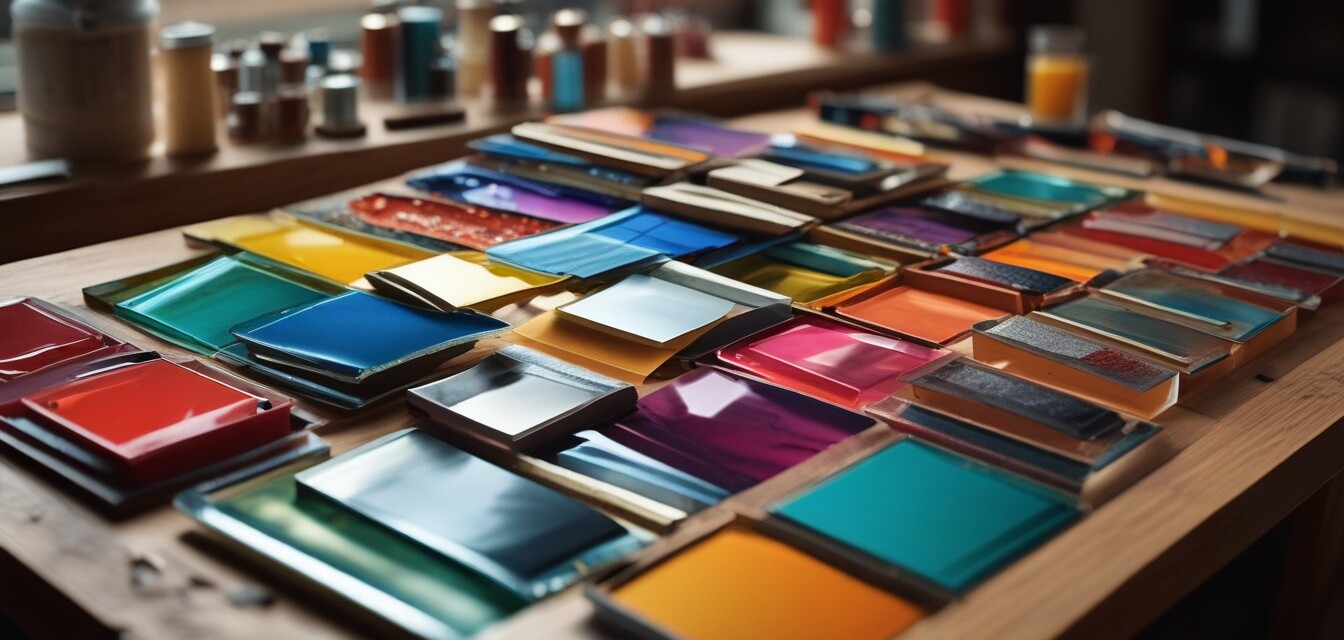
Tips for Selecting the Right Glass for Unique Projects
Key Takeaways
- Consider the thickness of the glass based on your project’s requirements.
- Explore a variety of colors and patterns to match your creative vision.
- Ensure compatibility with other materials used in your glass-making process.
- Familiarize yourself with different types of glass and their specific characteristics.
- Utilize resources and communities for further learning and project inspiration.
Selecting the right glass for your unique glass-making projects can be a rewarding yet daunting task. From the thickness and color to compatibility with other materials, each aspect plays a vital role in the outcome of your work. This guide will help you navigate these factors to ensure your projects come out beautifully.
Understanding Glass Types
Different types of glass can drastically impact your project. Here’s a quick overview of common types of glass you may encounter:
| Type of Glass | Characteristics | Best For |
|---|---|---|
| Annealed Glass | Standard glass that is not tempered or treated. Easily cut and shaped. | Fusing and slumping projects. |
| Tempered Glass | Stronger and more heat-resistant due to special treatment. Shatter-resistant. | Functional items that require durability. |
| Fused Glass | Made from glass particles melted together. Offers unique textures. | Decorative art pieces and intricate designs. |
| Stained Glass | Colored glass used primarily for decorative and artistic windows. | Art pieces with specific themes or religious motifs. |
Factors to Consider When Selecting Glass
To choose the right glass for your project, consider these crucial factors:
1. Thickness
The thickness of the glass affects not only how it looks but also how it performs.
- Thinner glass (1/8 inch) is suitable for decorative projects.
- Medium thickness (3/16 inch) is versatile for both decorative and functional projects.
- Thicker glass (1/4 inch and above) is necessary for items that need to withstand stress or heat.
2. Color and Transparency
Color choices can enhance the visual impact of your artwork. Consider the transparency and opaqueness:
- Transparent glass allows light and color to shine through.
- Opaque glass provides solid colors and can hide imperfections.
- Textured glass adds depth and interest to your pieces.
3. Compatibility
Ensure that the glass you select works well with other materials:
- Firing temperatures: Check that glass types have similar firing points.
- Adhesives: Some glues and adhesives may not bond well with certain glass types.
- Molds: Ensure the glass can work effectively with the molds chosen for your project.
Choosing Glass for Specific Techniques
Here’s how to choose glass for several popular projects:
Fusing Projects
- Use compatible glass that has similar coefficients of expansion.
- Select a variety of colors to create depth in your fused piece.
Slumping Projects
- Select thicker glass for the base to prevent breakage during firing.
- Consider color gradients for a stunning visual effect.
Casting Projects
- Choose glass that can withstand high temperatures.
- Consider fine frits for highly detailed designs and textures.
Resources for Further Learning
To continue enhancing your skills and selecting the right materials, engage with different resources available:
- Join online communities and forums dedicated to glass making.
- Attend workshops and classes to gain hands-on experience.
- Explore our glass sheets and supplies for project materials.
Conclusion
Selecting the right glass involves understanding the unique qualities each type offers and ensuring compatibility with your creative plans. By considering factors like color, thickness, and purpose, you will be well-equipped to embark on stunning glass projects.
Tips for Beginners
- Start with small projects to gain confidence.
- Experiment with different types and colors of glass.
- Keep a journal to document your results and learnings from each project.
Pros
- Wide variety of glass types available for different techniques.
- Customization adds uniqueness to your projects.
- Opportunity to learn and grow as an artist.
Cons
- Some glass types may be more expensive.
- Experience is needed for advanced techniques.
- Safety precautions must be followed while working with glass.

